Facts About Koalas: Habitat, Threats and Why They’re Now Endangered
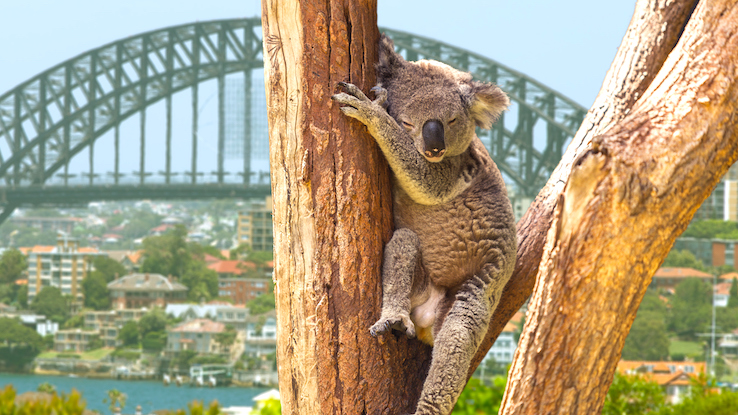
Koalas are famously adorable animals hailing from Australia. You might already know these cuddly creatures are known for sleeping most of the day in trees and munching on fragrant eucalyptus leaves. However, there’s more to their story than meets the eye.
Though these animals can be seen in zoos and animal sanctuaries, they’re in serious trouble out in the wild, having been declared endangered in 2022. Let’s take a deeper dive into koalas, their habitats and patterns, and why the lovable species is in danger of going extinct.
The Koala Is Actually Not a Bear At All
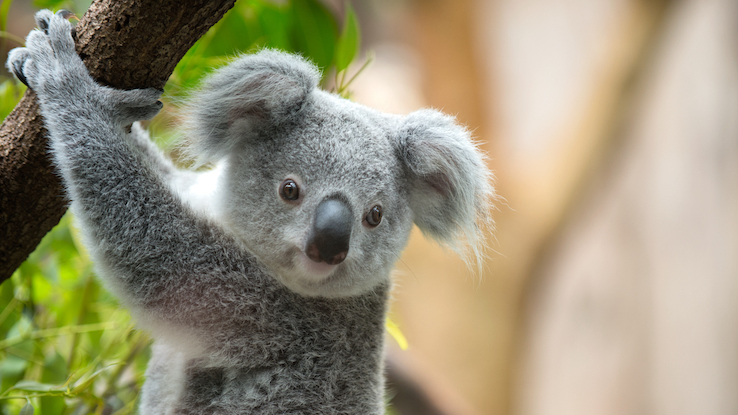
Koalas are often called “koala bears,” probably because they look so cute and cuddly and resemble teddy bears. These animals weigh anywhere from 9 to 29 pounds, and they’re about 2 feet tall. Koalas have large heads, furry ears and big black noses with fur that’s a mix of gray and white with a tint of brown.
While they do have a close resemblance to small bear cubs, koalas aren’t bears at all. Koalas are actually marsupials and are more closely related to Australia’s kangaroos and wombats. Marsupials have pouches to carry their offspring during early development stages.
A baby koala, also known as a joey, is born blind and earless. It grows in the mother’s pouch for about six months. After that, the joey rides around on its mother’s back for another six months, using its mother’s pouch to continue to feed during this time.
Koalas Have Bad Eyesight but Excellent Smell and Hearing
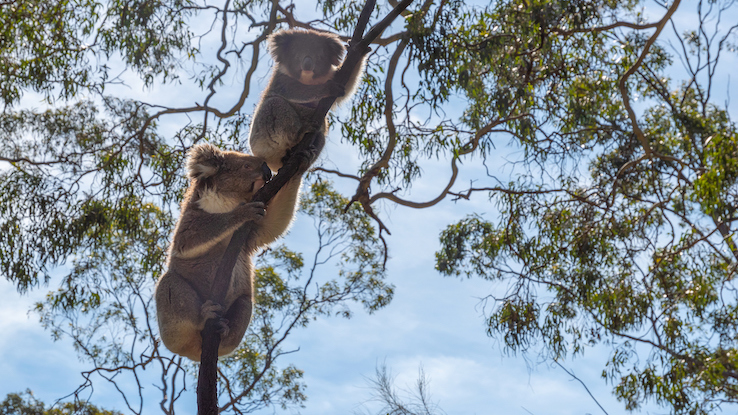
Joeys are completely blind at birth, and their eyesight doesn’t improve too much as they mature. Overall, koalas have poor vision. They aren’t entirely blind, but their long-range sight is low. Because of this, these marsupials rely more on other senses to navigate their daily lives.
To compensate for their eyesight, koalas have incredible hearing, which helps them stay ahead of predators and other koalas. They also have a great sense of smell they use to find food and detect koalas nearby. Interestingly, male koalas have scent glands on their chests that they use to mark trees and attract mates. They rub their chests up and down trees, which releases a strong, musky oil to mark their territory.
Koalas Sleep Most of the Day Because of Their Favorite Food
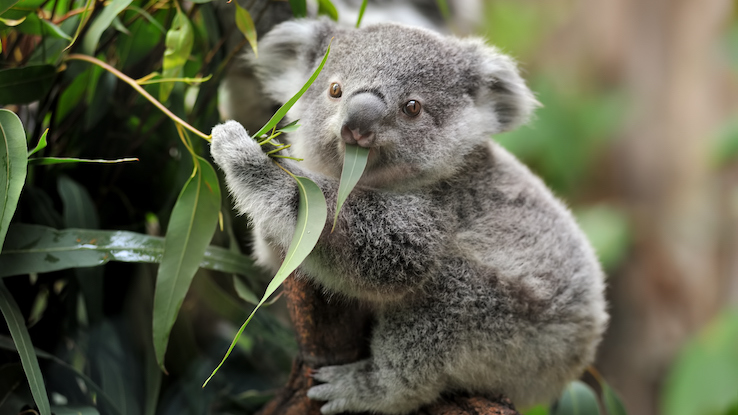
If you’ve ever seen koalas at the zoo, they were most likely asleep. These creatures spend most of their time tucked away in trees, sleeping from 18 to 22 hours a day. Koalas may move a little during the day if they’re disturbed in some way. However, they’re most active at night or around dawn and dusk.
The reason koalas sleep so much is because of their diet. Koalas, particularly in the wild, live in eucalyptus forests. They can eat over a pound of eucalyptus leaves each day. The issue with this diet is that these leaves are generally toxic. It takes a lot of energy for a koala’s digestive system to process and eliminate the toxins from the leaves, and all that work makes the animals tired. Koalas do get a decent amount of water from the leaves each day. However, eucalyptus leaves don’t have many nutrients that provide extra energy. This is why koalas sleep most of the day.
Koalas Face Immense Danger in the Wild
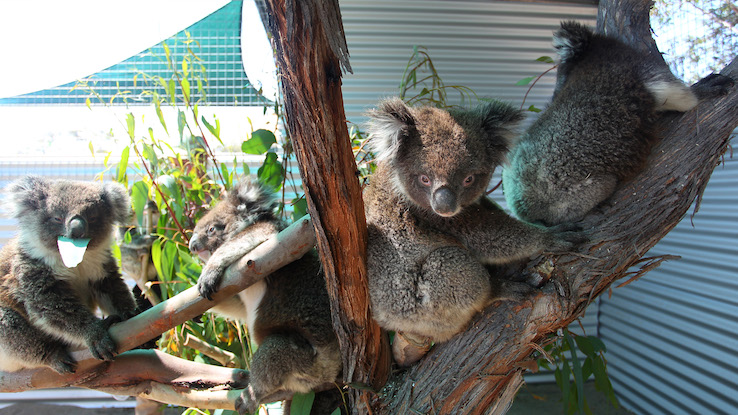
While there are some koalas in zoos and animal sanctuaries worldwide, wild koalas are native to Australia. Unfortunately, koalas face a lot of dangers in the wild, and their populations have severely declined.
In the late 19th and early 20th centuries, koala populations began to decline because the animals were being hunted for their fur. Today, the biggest threat to their survival is habitat loss. As a species that spends the majority of its time in trees, koalas are used to having ample space for climbing from tree to tree.
However, land clearing, logging and bushfires in Australia have impacted koala habitats. One of the most devastating disasters in Australia, the 2019–2020 bushfires, also tragically killed an estimated 1 billion animals, including over a third of the remaining koala population. The fires also impacted the available territory and resources for the koalas that did survive.
Of course, koalas face predators like dingoes and owls in the wild, as well as dogs in more urban areas. Climate change has decreased the nutritional value of the species’ beloved eucalyptus leaves (which is already low). It has also caused more intense droughts.
Koalas Are Now Officially an Endangered Species in Australia
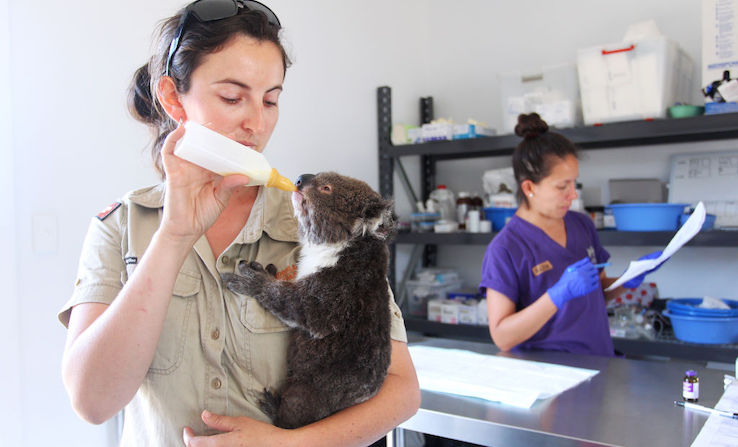
The threats that koalas face each day have taken an undeniable toll. In February 2022, Australian officials declared the species endangered across the east coast of the continent. This news comes a year after a New South Wales study found koalas would be extinct in that region by 2050 unless stronger laws were put in place to protect them. “Koalas have gone from no-listing to vulnerable to endangered within a decade. That is a shockingly fast decline,” shared conservation scientist Stuart Blanch from WWF-Australia.
The fact remains that koalas cannot survive without the intervention of the Australian government. In response to the announcement, Environment Minister Sussan Ley shared that the Australian government is working on a recovery plan to help revive the koala population. A part of that plan includes assessing land development applications for their impact on koalas.
Only time will tell if the government establishes stronger laws in Australia to protect koalas. In the meantime, individuals can play a role in koala conservation by donation to trustworthy charities, sponsoring koalas, raising awareness online and participating in eucalyptus-planting events, among other activities.





